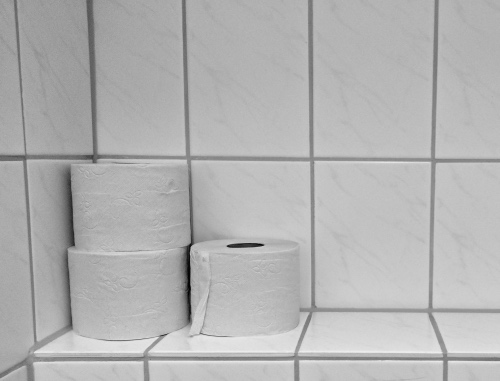Americans use more toilet paper than anyone else in the world, helping destroy the habitats of native people who live where it is sourced and contributing to global warming, a research study said this week.
US consumers use roughly three rolls of toilet paper a week, accounting for a fifth of the world’s tissue consumption, according to the report by environmental groups Stand.earth and the Natural Resources Defense Council.

PICTURE: Michael Jasmund/Unsplash
Single-use tissue products such as toilet paper used in the United States are made from wood pulp, mostly derived from logging in the old-growth northern, or boreal, forest in Canada, where logging companies clear cut more than a million acres (405,000 hectares) every year, the NRDC said.
The forest plays a key role in combating global warming because it absorbs and stores carbon dioxide, the greenhouse gas that contributes to it, the group said.
Logging releases that carbon into the atmosphere. Canada’s forest area has declined more than nine per cent since 2000 from logging, it said.
The NRDC singled out giant US tissue producers Procter & Gamble Co, Kimberly-Clark Corp. and Georgia-Pacific for using largely virgin fibre wood pulp in their products rather than recycled content or alternative fibers.
“The average American consumer doesn’t think about how their toilet paper is made,” said Shelley Vinyard, a co-author of the report and campaign manager of the NRDC’s boreal corporate campaign, on a conference call with members of the media.
“We can’t afford this old-fashioned and out-dated approach to making toilet paper and other tissue products, given the climate crisis and the urgent need to keep our forests intact,” she said.
A spokeswoman for Georgia-Pacific said the company makes products from recovered fiber and also from virgin wood, which is chosen for its softness and absorbency, and that it takes steps to assure it is sourcing wood responsibly.
“The choice of the raw materials we use for our products is driven by the product quality and performance characteristics demanded by our consumers,” the spokeswoman said in an email.
Kimberly-Clark has committed to reducing virgin pulp content in its products by 50 per cent by 2025 and increasing the use of low-impact alternative and recycled fibers, a spokesman said.
Its suppliers adhere to industry standards to manage forests, he said in an email.
“We are committed to making our products in ways that not only provide the health and hygiene performance consumers expect from our brands, but do so in a way that ensures the resilience of the forests where we source our fiber,” wrote Terry Balluck, Kimberly-Clark’s director of global communications.
Representatives of Procter & Gamble did not immediately respond to a request for comment.
The boreal forest in Canada is home to more than 600 communities of indigenous people whose traditional ways of life are threatened by intensive logging, the report said.
“Some communities have only a fraction of their forest left intact,” the report said. “Often communities do not have the power to say no to development on their lands.”
Clearing the forest has affected the traditional routes where Cree people hunt, fish and trap in northern Quebec, said Mandy Gull, Cree Nation deputy grand chief, on the conference call.
Per capita, US consumers use about 141 toilet paper rolls a year, compared with the United Kingdom at 127, Japan at 91 and France at 71, the report said.





